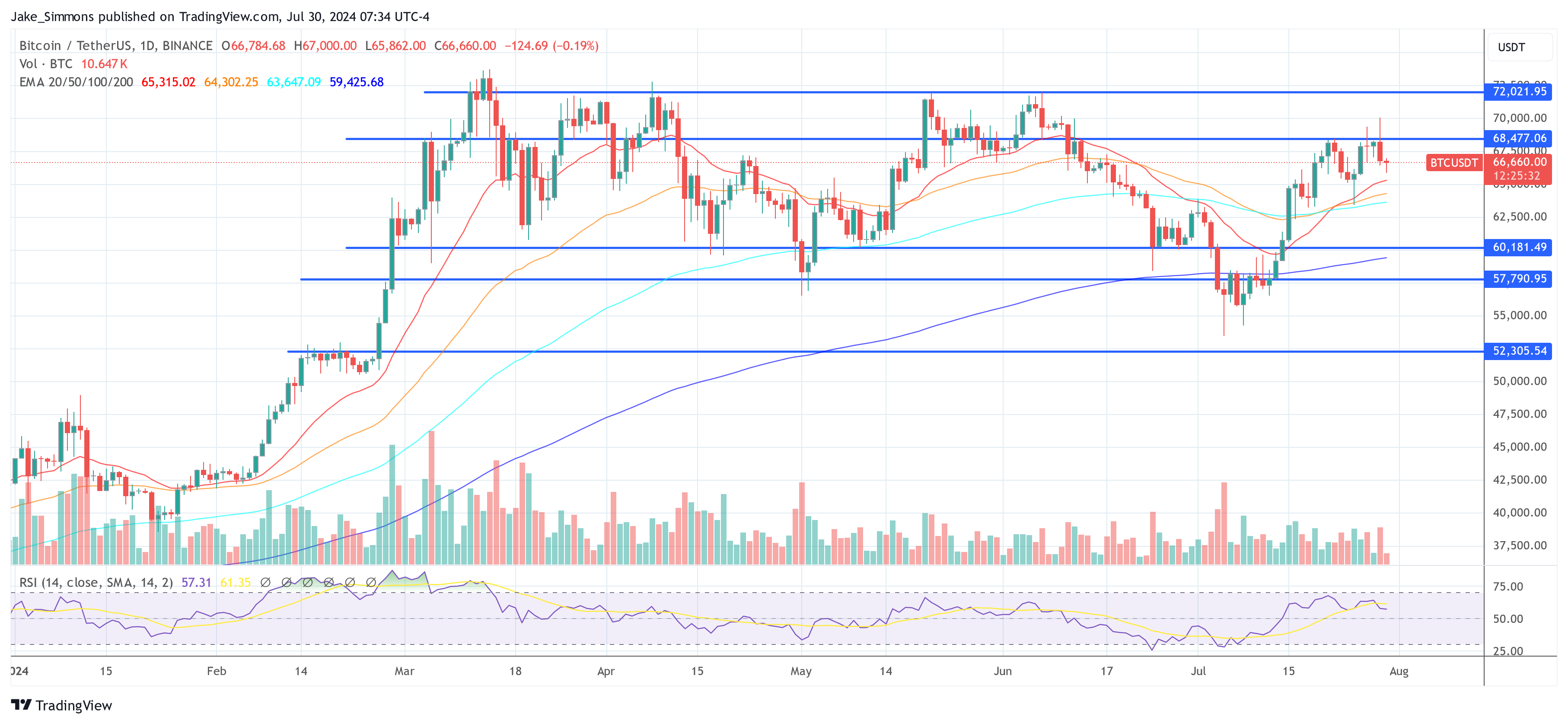In the analysis released on Monday, ASXN, an emerging cryptocurrency research firm, examines the dynamics of global Bitcoin adoption through the lens of game theory. The report, titled “A Game Theory of Bitcoin Adoption Across Nations,” examines how nations can leverage mathematical game theory to strategically adopt Bitcoin.
The report follows Donald Trump’s statement at the Bitcoin 2024 conference that all BTC owned by the US government would be converted into a “strategic stockpile of Bitcoin” through enforcement action.
Bitcoin Game Theory Explained
The report begins by framing BTC adoption in the broader context of game theory, a discipline that evaluates the strategic decisions made by individuals or entities under conditions of uncertainty and competing interests. According to ASXN, “game theory provides a structured framework for predicting the outcomes of national-level digital currency adoption strategies, taking into account not only economic benefits and technological advances, but also potential geopolitical shifts.”
Under the concept of the “First Mover Advantage,” early adoption of BTC can advantageously position nations on several fronts. The report states, “Nations that move first into the Bitcoin arena can set precedents in legal and regulatory frameworks, attract global crypto businesses, and secure a significant share of the blockchain innovation landscape.”
However, it contrasts these advantages with the pitfalls of premature regulatory frameworks and the volatility of Bitcoin’s market value, which could pose significant risks to national economies. The report adds: “Once a few influential countries adopt Bitcoin, others will follow suit to avoid being left behind – creating a bandwagon effect. This effect is driven by both the returns to adoption and the risks of non-adoption. This is when Bitcoin’s adoption cycle enters the steepest part of its S-curve.”
The “payoff matrix” — a basic tool in game theory — is used by ASXN to analyze the decision-making process of countries considering whether to adopt Bitcoin. ASXN explains how the matrix helps countries assess the potential rewards and risks of different strategic choices. “Each nation faces a unique matrix based on its economic structure, political climate, and market dynamics. The optimal strategy, while generally tilted toward adoption given the projected global dominance of cryptocurrencies, must still be tailored to individual national circumstances,” the report explains.

In addition, the report also introduces the concept of “Best Response Function” in the context of Bitcoin adoption, explaining how nations develop strategies by anticipating the decisions of others. “A nation’s strategy is influenced not only by the direct benefits of Bitcoin adoption, but also by the expected actions of other nations that could change the global economic and technological landscape,” the report states.
The researchers add how the bandwagon effect might play out; “The logic plays out something like this – Nation 1 evaluates the cost-benefit trade-off and decides to adopt. Nation 1 realizes that all other nations will also choose to adopt, Nation 1 concludes that, given that all nations will choose to adopt, they should speed up adoption so as not to lose their competitive advantage. Slowly, and then all at once.”
ASXN uses several real-world applications to illustrate the theoretical concepts discussed. The case of El Salvador is analyzed in detail, showing how its early adoption has influenced other countries’ perceptions and strategies towards Bitcoin. The analysis also covers how the Wisconsin Pension Fund’s investments in Bitcoin ETFs reflect a broader trend of subnational entities evaluating the cryptocurrency as a viable component of their financial strategies, and MicroStrategy’s significant involvement is highlighted as a corporate counterpart to national strategies.
Looking ahead, the report discusses potential future trajectories for Bitcoin adoption, which are influenced by both technological advances and evolving geopolitical dynamics. Specifically, it addresses Robert Kennedy Jr.’s proposal at the Bitcoin Nashville 2024 conference to acquire 550 BTC per day until the U.S. accumulates 4 million BTC, which is 19% of the total available BTC supply. This approach is intended to reflect the proportion of global gold reserves the U.S. currently holds compared to other countries.

And Bitcoin’s game theory is already working. “While the ideas Trump presented at Bitcoin Nashville may or may not come true, the fact that he publicly acknowledged Bitcoin’s existence and its properties is a victory, and we are already seeing early signs of its effects,” the researchers conclude.
This is Johnny Ng, a member of the Hong Kong Legislative Council, who, following Trump’s decision, advocated for the inclusion of Bitcoin in the city’s financial reserves.
At the time of going to press, the BTC price was $66,660.

Featured image created with DALL E, chart from TradingView.com
